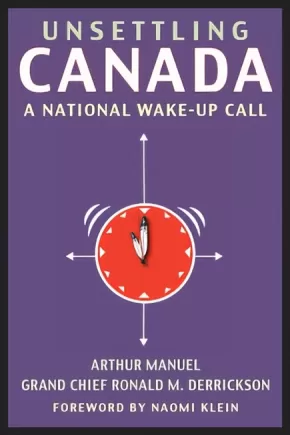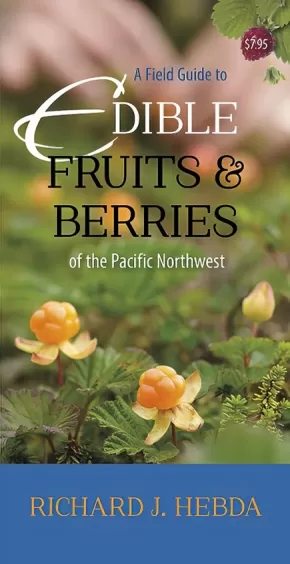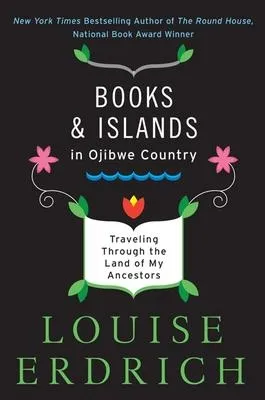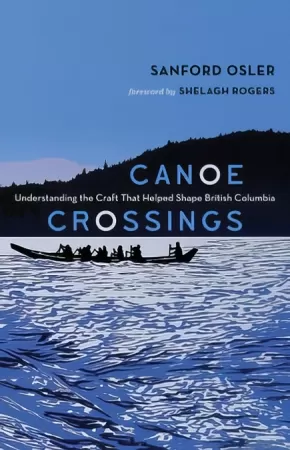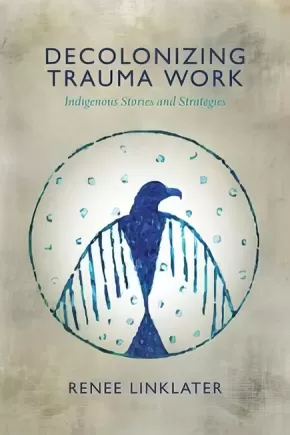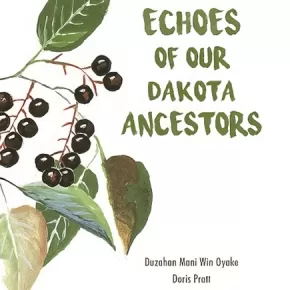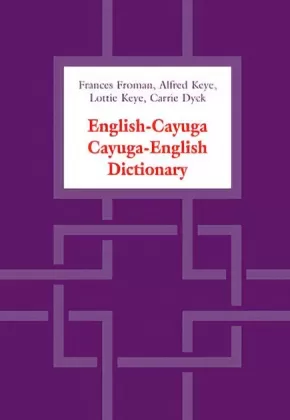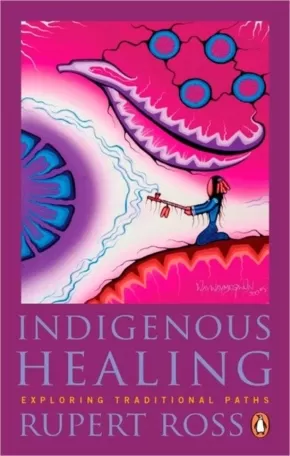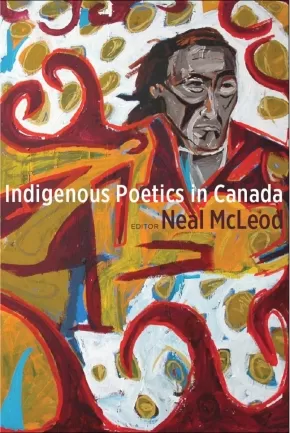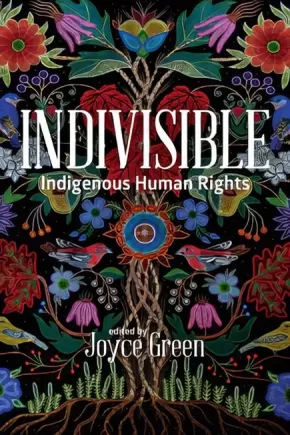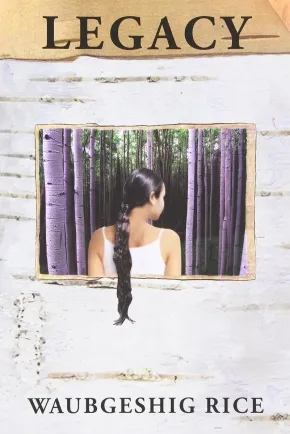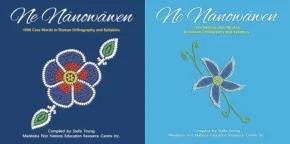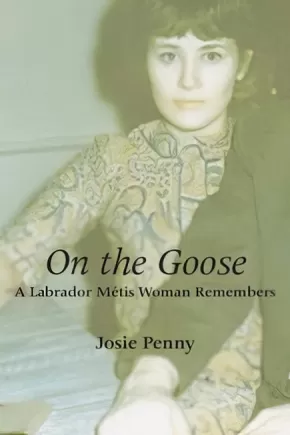Adult Book
Synopsis:
Unsettling Canada, a Canadian bestseller, is built on a unique collaboration between two First Nations leaders, Arthur Manuel and Grand Chief Ron Derrickson.
Both men have served as chiefs of their bands in the B.C. interior and both have gone on to establish important national and international reputations. But the differences between them are in many ways even more interesting. Arthur Manuel is one of the most forceful advocates for Aboriginal title and rights in Canada and comes from the activist wing of the movement. Grand Chief Ron Derrickson is one of the most successful Indigenous businessmen in the country.
Together the Secwepemc activist intellectual and the Syilx (Okanagan) businessman bring a fresh perspective and new ideas to Canada’s most glaring piece of unfinished business: the place of Indigenous peoples within the country’s political and economic space. The story is told through Arthur’s voice but he traces both of their individual struggles against the colonialist and often racist structures that have been erected to keep Indigenous peoples in their place in Canada.
In the final chapters and in the Grand Chief’s afterword, they not only set out a plan for a new sustainable indigenous economy, but lay out a roadmap for getting there.
Reviews
“This is the back story of both grassroots and backroom struggles that created the context in which we find ourselves today, one in which a new generation of First Nations leaders is demanding sovereignty and self-determination, and more and more non-Indigenous Canadians finally understand that huge swaths of this country we call Canada is not ours - or our government's - to sell.” — Naomi Klein, from the Foreword
“Pragmatic and helpful, this is a timely book for our fraught and political moment” — Quill & Quire
"Unsettling Canada is a breathtakingly beautiful story of Indigenous resistance, strength, and movement building. Unsettling Canada echoes the power of George Manuel's The Fourth World, centering the heart of the narrative deep inside a kind of Indigenous intelligence rarely shared outside our communities. This is the critical conversation that Canada and Indigenous peoples must have because it is centred on land, and, therefore, it is one of the most important books on Indigenous politics I've ever read." — Leanne Betasamosake Simpson, author of Dancing on Our Turtle's Back
Educator Information
This resource would be useful for courses in history, social justice, political science, and social studies. Recommended for students in grades 10 to 12 or those at a college/university level.
CONTENTS
Foreword Naomi Klein
Chapter 1 The Lay of the Land
Chapter 2 Institutionalizing a People: Indian Hospital, School, Jail
Chapter 3 White Paper to Red Paper: Drawing the Battle Lines
Chapter 4 Occupy Indian Affairs: Native Youth in Action
Chapter 5 Aboriginal Title: No Surrender
Chapter 6 The Constitution Express: A Grassroots Movement
Chapter 7 Don’t Let Them Bully You: A Business Interlude
Chapter 8 A Chief’s Concerns: Finances, the People, and the Land
Chapter 9 Upping the Ante: RCAP and a Landmark Court Decision
Chapter 10 The Battle in the Forest: The Trade in Indian Trees
Chapter 11 Sun Peaks to Geneva: Playgrounds and Fortresses
Chapter 12 Taking It to the Bank: Accounting for Unpaid Debt
Chapter 13 The Fourth World: A Global Movement
Chapter 14 Line of Defence: Side by Side for Mother Earth
Chapter 15 No Half Measures: The Price of Uncertainty
Chapter 16 Days of Protest: Young Activists Come Together
Chapter 17 The End of Colonialism
Afterword Grand Chief Ronald M. Derrickson
Acknowledgements
Appendix United Nations Declaration on the Rights of Indigenous Peoples
Notes
Index
Additional Information
288 pages | 6.00" x 9.00"
Synopsis:
A Canadian bestseller and winner of the 2016 Canadian Historical Association Aboriginal History Book Prize, Unsettling Canada is a landmark text built on a unique collaboration between two First Nations leaders.
Arthur Manuel (1951-2017) was one of the most forceful advocates for Indigenous title and rights in Canada; Grand Chief Ron Derrickson, one of the most successful Indigenous businessmen in the country. Together, they bring a fresh perspective and bold new ideas to Canada's most glaring piece of unfinished business: the place of Indigenous peoples within the country's political and economic space.
This vital second edition features a foreword by award-winning activist Naomi Klein and an all-new chapter co-authored by law professor Nicole Schabus and Manuel's son, Ska7cis, honouring the multi-generational legacy of the Manuel family's work.
Reviews
“Pragmatic and helpful, this is a timely book for our fraught and political moment” — Quill & Quire
"Unsettling Canada is a breathtakingly beautiful story of Indigenous resistance, strength, and movement building. Unsettling Canada echoes the power of George Manuel's The Fourth World, centering the heart of the narrative deep inside a kind of Indigenous intelligence rarely shared outside our communities. This is the critical conversation that Canada and Indigenous peoples must have because it is centred on land, and, therefore, it is one of the most important books on Indigenous politics I've ever read." — Leanne Betasamosake Simpson, author of Dancing on Our Turtle's Back
Educator Information
This resource would be useful for courses in history, social justice, political science, and social studies. Recommended for students in grades 10 to 12 or those at a college/university level.
Additional Information
320 pages | 6.00" x 9.00"
Synopsis:
If wild berry foragers followed vague advice such as "berries of red and you'll soon be dead" or "berries of blue will do harm to you" imagine how many of nature's delicacies would be passed by! On the other hand, for anyone who has thought twice before popping that delicious-looking morsel into their mouth, the reality of poisonous berries growing in the wild is reason enough to be berry aware.
With a basketful of information presented on a two-sided, lightweight and pocket-sized pamphlet, A Field Guide to Edible Fruits and Berries of the Pacific Northwest is the perfect resource for wild fruit- and berry-lovers of all ages, whether on a short walk in the woods or a backcountry hiking trip. In addition to more commonly identified specimens such as strawberries, blueberries and blackberries, explore the delicious possibilities of evergreen huckleberries, cloudberries and crowberries, and learn how to tell the edible lingonberry from the poisonous baneberry.
Each entry is illustrated with a colour photograph and accompanied by a brief description and seasonal availability to help identify more than forty kinds of fruits and berries found in the wild, along with information on how best to prepare and preserve the edible ones.
Additional Information
2 pages | 37.00" x 9.00" | field guide with 50 colour photographs
Synopsis:
For more than three decades, bestselling author Louise Erdrich has enthralled readers with dazzling novels that paint an evocative portrait of Native American life. From her dazzling first novel, Love Medicine, to the National Book Award-winning The Round House, Erdrich’s lyrical skill and emotional assurance have earned her a place alongside William Faulkner and Willa Cather as an author deeply rooted in the American landscape.
In Books and Islands in Ojibwe Country, Erdrich takes us on an illuminating tour through the terrain her ancestors have inhabited for centuries: the lakes and islands of southern Ontario. Summoning to life the Ojibwe's sacred spirits and songs, their language and sorrows, she considers the many ways in which her tribe—whose name derives from the word ozhibii'ige, "to write"—have influenced her. Her journey links ancient stone paintings with a magical island where a bookish recluse built an extraordinary library, and she reveals how both have transformed her.
A blend of history, mythology, and memoir, Books and Islands in Ojibwe Country is an enchanting meditation on modern life, natural splendor, and the ancient spirituality and creativity of Erdrich's native homeland—a long, elemental tradition of storytelling that is in her blood.
Additional Information
160 pages | 5.31" x 8.00" | 15 Illustrations, 1 Map | Paperback
Synopsis:
“A comprehensive and well-informed review of canoeing and kayaking in British Columbia.” —BC Studies
Often called one of the Seven Wonders of Canada, the canoe has played a particularly important role in British Columbia. This seemingly simple watercraft allowed coastal First Nations to hunt on the open ocean and early explorers to travel the province’s many waterways. Always at the crossroads of canoe culture, BC today is home to innovative artists and designers who have rediscovered ancient canoe-building techniques, as well as community leaders who see the canoe’s potential to bring people together in exciting, inspiring ways.
The story of Canoe Crossings begins some fifteen thousand years ago, when, as compelling new evidence suggests, the first humans to reach the Americas did so by canoe down the West Coast. It continues through the centuries, chronicling the evolution of the canoe and its impact on the various people who used it to explore, hunt, trade, fight, race, create, and even heal. The book contains dozens of stories of colourful, passionate people who have contributed to the province’s canoe culture, including a teenager who lived ninety feet up in a tree house while designing and building the world’s longest kayak; a group of high school students who practised on a tiny lake and went on to win several World Dragon Boat Championships; and at-risk Aboriginal youth who reconnected with their traditional culture through annual “big canoe” trips.
Canoe Crossings will appeal to anyone who has ever sought adventure, found solace, or seen beauty in a canoe or wondered about the origins of its design and use in British Columbia and beyond.
Reviews
“The canoe is a threshold vessel—a skin, a fabric, and some bark between water and sky. Floating is some kind of miracle, some kind of dream. All canoeists are dreamers to a degree. As you will see in Canoe Crossings, the canoe has always brought diverse groups of people together, both for joy and for common purpose, and it always will." —from the foreword by Shelagh Rogers
"An important and substantial contribution to canoe literature and to the significance of this watercraft in BC. The blend of history, present-day, and personal accounts is sensitively and fascinatingly presented. A highly informative and captivating read." —Käri-Ann Thor, President, Recreational Canoeing Association of British Columbia
Additional Information
192 pages | 5.50" x 8.50"
Synopsis:
The poetry of Clay Pots and Bones is Lindsay Marshall’s way of telling stories, of speaking with others about what things that matter to him. His heritage. His people. His life as a Mi’kmaw. For the reader, Clay Pots and Bones is a colourful journey from early days, when the People of the Dawn understood, interacted with and roamed the land freely, to the turbulent present and the uncertain future where Marshall envisions a rebirth of the Mi’kmaq. The poetry challenges and enlightens. It will, most certainly, entertain.
Additional Information
96 pages | 5.00" x 8.00"
Synopsis:
In Decolonizing Trauma Work, Renee Linklater explores healing and wellness in Indigenous communities on Turtle Island. Drawing on a decolonizing approach, which puts the “soul wound” of colonialism at the centre, Linklater engages ten Indigenous health care practitioners in a dialogue regarding Indigenous notions of wellness and wholistic health, critiques of psychiatry and psychiatric diagnoses, and Indigenous approaches to helping people through trauma, depression and experiences of parallel and multiple realities. Through stories and strategies that are grounded in Indigenous worldviews and embedded with cultural knowledge, Linklater offers purposeful and practical methods to help individuals and communities that have experienced trauma. Decolonizing Trauma Work, one of the first books of its kind, is a resource for education and training programs, health care practitioners, healing centres, clinical services and policy initiatives.
Additional Information
176 pages | 6.00" x 9.00" | Paperback
Synopsis:
Enjoy imakhmakhap woyakapi (enjoyments that are told) in Dakota. Each chapter in this charmingly illustrated booklet focuses on a month of the year, with stories, poems and songs in the Dakota language. Doris Pratt, a long time language teacher and material developer, shares this Dakota collection to help students learn and practice the language.
Educator Information
This book is written in the Dakota language. It is useful as a total Dakota language program or can be used to supplement any Dakota language course. It is suitable for adult language courses. Included in the appendices are explanations of the Dakota language and a prayer by Hector Bunn.
Synopsis:
The first comprehensive lexicographic work on Cayuga, an Iroquoian language spoken in southern Ontario at Six Nations of the Grand River, this dictionary, combines the work of Dyck, a professor of linguistics, and Froman, Keye, and Keye, all Cayuga language teachers at Six Nations. It contains over 3000 entries, including 1000 verb forms and many nouns never before printed; extensive cross-referencing, thematic appendices that highlight cultural references and provide 1600 further entries, and a short grammatical sketch complete this accomplished work.
Entries in the main dictionary are organized by bases, which will make the dictionary especially helpful to those learning Cayuga as a second language. The dictionary's accuracy and extensiveness will make it an indispensable reference not only to the Cayuga speaker and student, but also to other Iroquoian speakers, linguists, anthropologists, and historians of Indigenous Peoples.
Produced under the auspices of the Sweetgrass First Nations Language Council Inc.
Reviews
"The first extensive dictionary of Cayuga, this benchmark work documents the language in 3,000 entries and in word lists organized thematically in appendixes ... A valuable tool for linguists of Iroquoian languages and anthropologists, as well as those who study the Cayuga language. Summing up: Highly recommended."— R. Hanson, Choice
"A major milestone in Iroquoian studies and an extremely important tool in the preservation of the Cayuga language."— Blair A. Rudes, Department of English, University of North Carolina at Charlotte
Additional Information
786 pages | 6.88" x 9.73" | Paperback
Synopsis:
Imagine a world in which people see themselves as embedded in the natural order, with ethical responsibilities not only toward each other, but also toward rocks, trees, water and all nature. Imagine seeing yourself not as a master of Creation, but as the most humble, dependent and vulnerable part.
Rupert Ross explores this indigenous world view and the determination of indigenous thinkers to restore it to full prominence today. He comes to understand that an appreciation of this perspective is vital to understanding the destructive forces of colonization. As a former Crown Attorney in northern Ontario, Ross witnessed many of these forces. He examines them here with a special focus on residential schools and their power to destabilize entire communities long after the last school has closed. With help from many indigenous authors, he explores their emerging conviction that healing is now better described as “decolonization therapy.” And the key to healing, they assert, is a return to the traditional indigenous world view.
The author of two previous bestsellers on indigenous themes, Dancing with a Ghost and Returning to the Teachings, Ross shares his continuing personal journey into traditional understanding with all of the confusion, delight and exhilaration of learning to see the world in a different way.
Ross sees the beginning of a vibrant future for indigenous people across Canada as they begin to restore their own definition of a “healthy person” and bring that indigenous wellness into being once again. Indigenous Healing is a hopeful book, not only for indigenous people, but for all others open to accepting some of their ancient lessons about who we might choose to be.
Additional Information
344 pages | 5.25" x 8.20" | Paperback
Synopsis:
Indigenous Poetics in Canada broadens the way in which Indigenous poetry is examined, studied, and discussed in Canada. Breaking from the parameters of traditional English literature studies, this volume embraces a wider sense of poetics, including Indigenous oralities, languages, and understandings of place.
Featuring work by academics and poets, the book examines four elements of Indigenous poetics. First, it explores the poetics of memory: collective memory, the persistence of Indigenous poetic consciousness, and the relationships that enable the Indigenous storytelling process. The book then explores the poetics of performance: Indigenous poetics exist both in written form and in relation to an audience. Third, in an examination of the poetics of place and space, the book considers contemporary Indigenous poetry and classical Indigenous narratives. Finally, in a section on the poetics of medicine, contributors articulate the healing and restorative power of Indigenous poetry and narratives.
Awards
- 2014 ACQL Gabrielle Roy Prize for Literary Criticism winner.
Reviews
"Indigenous Poetics in Canada is that rare book of scholarship that speaks to the heart and spirit as well as the mind. The selections in this collection offer powerful individual and collective insight into the ways that diverse traditions of Indigenous poetics animate our imaginative possibilities and extend our cultural understandings across time, space, and difference. To study Indigenous poetics is to be forcefully reminded of both our historical traditions and their continuing significance, and the poets, writers, scholars, and story-makers featured in this volume are among the most eloquent and insightful voices on the topic today. This is a transformative intervention in Indigenous literary studies as well as the broader canon of Canadian literature, reminding us that questions of aesthetics are always in dynamic relationship with the lived experience of our politicized imaginations in the world."— Daniel Heath Justice (Cherokee Nation), April 2014
"Conversations about Indigenous literatures will be forever enriched by this stunning new collection. Here, the leading voices in Indigenous literary studies draw upon deep currents of inspiration—both ancient and contemporary—as they reflect upon and powerfully perform the act of re-making the world through language. Joyful, humbling, and wonderfully diverse, Indigenous Poetics in Canada welcomes readers and writers into a re-indigenized rhetorical landscape-and I cannot wait to see what takes place there.'"— Keavy Martin, April 2014
"In a fine introduction, McLeod does an admirable job of framing the essays and interviews to come while giving readers less familiar with indigenous poetics insight into some of the tropes and rhetorical strategies practitioners use, including kiskino (‘things...pointed to, but never completely articulated’), kakêskihkêmowina
(‘counselling narratives’), and aniskwâcimopicikêwin (‘the process of connecting stories together’). That this collection exists is at once a challenge to the white publishing world that has long refused to recognize indigenous poetic practices as ‘poetry’ and a testament to the health and vibrancy of the living word of indigenous consciousness.... Summing up: Highly recommended."— B. Carson, Choice, December 2014, December 2014
Educator Information
This book would be useful for the following subject areas or courses: Indigenous Studies, Poetry, Canadian Literature, and Literary Criticism.
Additional Information
416 pages | 6.00" x 9.00"
Edited by Neal McLeod.
Synopsis:
Indigenous rights are generally conceptualized and advocated separately from the human rights framework. The contributors to Indivisible: Indigenous Human Rights, however, deftly and powerfully argue that Indigenous rights are in fact human rights and that the fundamental human rights of Indigenous people cannot be protected without the inclusion of their Indigenous rights, which are suppressed and oppressed by the forces of racism and colonialism. Drawing on a wealth of experience and blending critical theoretical frameworks and a close knowledge of domestic and international law on human rights, the authors in this collection show that settler states such as Canada persist in violating and failing to acknowledge Indigenous human rights. Furthermore, settler states are obligated to respect and animate these rights, despite the evident tensions in political and economic interests between elite capitalists, settler citizens and Indigenous peoples.
Reviews
“The historic and contemporary challenges faced by Indigenous peoples, be it the tragedy of residential schools, high levels of violence against women, abusive policing, struggles around land and resources, or entrenched poverty are reflective of the disgraceful failure of Canada and other states to uphold human rights. Indivisible is a critical call to governments and Indigenous peoples to take up the indivisible framework of rights protection enshrined in the UN Declaration of the Rights of Indigenous Peoples.” — Alex Neve, Amnesty International
“Well written, fast moving, and well researched, this is book is a rich, smart resource for anyone wanting to break down and understand the human rights versus indigenous rights debate, and to move on to more productive conversations about real political and legal change for indigenous peoples.” — Val Napoleon, University of Victoria
“Have you ever looked back at a point in your life when, had good advice been taken, it would have meant a much better future? This book offers that advice, now. Canadians who want to live well because Indigenous peoples prosper need to read Indivisible.” — Robert Lovelace, Retired Chief of Ardoch Algonquin First Nation, professor of global studies, Queen’s University
Educator Information
Table of Contents
Indigenous Human Rights are Indivisible (Joyce Green)
THEORETICAL AND POLITICAL CONTEXT FOR INDIGENOUS HUMAN RIGHTS
Denying Indigenous Human Rights: Colonialism and Rights Discourse in Canada (Joyce Green)
Two The Race Bind: Denying Aboriginal Rights in Australia (Maggie Walter)
Colonialism Past and Present: Indigenous Human Rights and Canadian Policing (Elizabeth Comack)
Indigenous Human Rights and Decolonization (Andrea Smith)
ABORIGINAL HUMAN RIGHTS — SPECIFIC THEMES
McIvor v. Canada: Legislated Patriarchy Meets Aboriginal Women’s Equality Rights (Gwen Brodsky)
Confronting Violence: Indigenous Women. Self-Determination and International Human Rights (Rauna Kuokkanen)
Victoria’s Secret: How to Make a Population of Prey (Mary Eberts)
INTERNATIONAL AND DOMESTIC CONSTITUTIONAL LAW and INDIGENOUS HUMAN RIGHTS
Free, Prior and Informed Consent: Defending Indigenous Rights in the Global Rush for Resources (Craig Benjamin)
The Presumption of Conformity: International Indigenous Human Rights and the Canadian Constitution (Brenda Gunn)
Undermining Indigenous Peoples’ Security and Human Rights (Paul Joffe)
Additional Information
240 pages | 6.00" x 9.00"
Synopsis:
In the winter of 1989, Eva Gibson is a university student living in downtown Toronto. She's homesick and anxious to finish her education and return home to serve her Anishinaabe community. Then tragedy strikes and it becomes the Gibson family's legacy. Back on the rez, Eva's brothers and sister struggle to cope with their losses and redefine "their legacy." Some turn to ceremony; some turn to vice. All the while, they contend with a creeping sentiment of revenge.
Additional Information
192 pages | 6.00" x 9.00" | Paperback
Synopsis:
Set of two language books:
- Cree Sayings and Phrases in Roman Orthography and Syllabics
- 1000 Cree Words in Roman Orthography and Syllabics
Synopsis:
Josie Penny's life as part of a loving Métis family in an isolated corner of Labrador changed dramatically when she was taken away to a residential school. Abused by the students, Josie became increasingly angry and isolated from her family and community as she grew into her teens. At seventeen she left for Goose Bay to make her fortune and start her own life.
On the Goose is the story of how Josie came to terms with her feelings of helplessness and isolation as she began to understand why she could not feel or express love. Josie Penny's memoir is an inspiring true story of how love and hard work helped one woman triumph over adversity.

